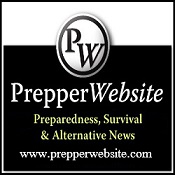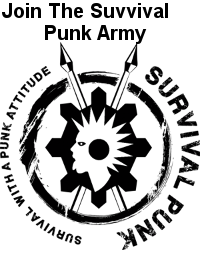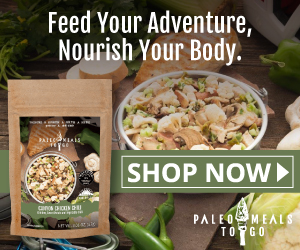The Get Home Bag
The Get Home Bag, affectionately know in the survival community as the G.H.B. Because we all love acronyms right? So what is a G.H.B and why should you have one. What goes in it? And why not just carry your Bug out bag? Well I’m going to tell you.
I tried to get a dictionary definition or at least a urban dictionary definition of a GHB anything. All I turned up was forum posts and a few blog’s. Guess this will be another. So I’ll define it for you
A GHB is a bag whose purpose is to be able to get you from one place to another, usually home, with the minimal necessities required.
Well im no Webster but that’s the essence boiled down. Basically it’s a bag/ container carried in your car and possibly on your person at all times. With the exception of in your home. In your home you should have a Bug out bag (BoB) packed and ready to go.
Many survivalist believe you should simply carry you BoB with you in you vehicle. While this seems to make sense and in some cases does. I disagree for a few reasons. My purpose for GHB is to get from work, friends or trips out back home and stay there. I also use it for small everyday emergencies, the kind that we face all the time. These are the issues I tend to worry about more than the end of the world as we know it. For those small issues I’d would much rather have a smaller compact minimized bag. If for some reason I have to leave my car and hoof it I choose the smaller lighter bag everyday. Less weight equals less calories burned. Sure your not as prepared but its a good enough situation for me. I can’t tell you home many times I have used it for emergency gas, a snack, headaches and a million other solutions to small problems.
Now down to specifics. The bag I’m using now is a UTG coyote bag I got from amazon for about $25 bucks delivered.
I’ve taken it on a few hikes at this point to see how it feels and to test the items I chose for it.
The first item I include is a army issue poncho. It is the top most item under the pouch. I want to be able to get to it fast without fumbling through the pack. Getting rained on sucks big time. It can take your great hike into a miserable wet one. That’s in the best of times in a disaster it could prove fatal. This is an item I chose not to skimp out on. I have used garbage bag poncho’s in the past and while they do work they are not optimal. I wanted to ruggedness of army built gear with more maneuverability. If mobility is a big concern adding a pair of rain pants will add a ton of versatility.
Next are the two food pouches. This are rotated through as healthy food choices when hungry and far from home. The items I choose are tuna fish packets, tanka bars, Lara bars, Justins almond butter packets,dried fruit, coffee packets and true lime. My main interest in my food priories are Fat > protein and minimal carbohydrates from fruits. I want high energy in small packages. I want it to be as minimally processed as possible. These items come close. Items that may be replacing them in the future include biltong, jerky, pemican, pre-cooked bacon or meals. The true lime is for making crappy water taste better.
Next is my containers module. It has 1 one gallon freezer baggie, 1 one quart baggie, and 1 contractor sized garbage bag. The freezer and sandwich baggies are primarily for water collection. Containers are one of the hardest things in nature to reproduce so carry a few. The black is for emergency shelter construction.
Next I carry a Fiskars brand folding pruning saw. Much more effective at processions small pieces of wood for its weight than a axe. I like the convenience of a folding saw to prepare wood for batoning or straight to the fire. The Fiskars will run you about $10. I would however suggest you get a Bacho laplander. With the fiskars the blade is not thick enough and tends to bend easily. For small tasks and infrequent use it works well though.
Next up is a whole role of 150# bank line. I debated on whether to go with para cord or bank line and decided to go with the bank line for a slight edge on versatility but mostly to test it out. I have heard that in many ways it out performs para cord but I have not tested it yet.
Here I have a cordage module. Two rolls of duct tape around cards. The orange one is carried in addition for redundancy and signaling. It can be used to leave a trail or make a rescue flag. Also included is a small ten foot or so hank of para cord.
I keep four light tent pegs for pegging out the poncho. I’ve made pegs before from wood and in an emergency I chose to save time. They weight hardly nothing and can be used for many other purposes.
These items are more for everyday use. Having something stuck in your teeth is one of the most annoying things ever. As for the wisp’s having clean breath before a date is priceless. In a disaster maintaining good oral hygiene can be a boon as well. No one wants a tooth ache when getting to a dentist could take days or even weeks.
Next is a Mora knife. I choose the mora for it’s ease of sharpening, weight and dependability. I like this model for it’s good grip. Combined with the folding saw I can process wood into kindling for fire starting and to get to dry wood on the inside with batoning with the mora.
Titanium Spork! I just like saying it. I can’t help it. Sure it has a lot going on for it. Extremely light weight, won’t rust, strong but mostly it’s bad ass. I have had it come in handy a few times when I have forgotten or misplaced a fork with my lunch. You could use plastic restaurant ones but I find them to be too flimsy and get a nasty film on them when eating anything fatty/ greasy. Besides which sounds cooler?
This is one of the most important modules in the kit. The fire module. It resides in the side pouch by it self for easy abscess. If I’m cold and shivering I want fire and I want it now. I chose to go with two methods to start a fire and two forms of tinder. The mini bic lighter is the primary go to device. It’s quick and easy and produces sure flame. Combined with either the Vaseline soaked cotton balls or the military fuel gel and the is guaranteed fire. The magnesium block is redundancy. For all its greatness the bic lighter can fail, it can get wet, run out of fuel or break.
This is my First Aid module. It goes in the front pocket for quick assess. This kit is designed for minor discomfort, i.e: aches and pains, headaches and to stop minor bleeding. The aspirin has been used more than anything else. Most of the concept behind this kit come from Nutnfancy. I’m not going to go into detail on what is included in the F.A kit at this time. If you would like to know more about it let me know in the comments.
Here I have a Rite in Rain note pad, A pen and a marker. Ever had to write something down in the car and had to search all over looking for a pen and paper? Yeah it’s a pain in the ass. This is another item designed to make everyday life easier. In a disaster situation it’s only more useful. Writing down critical information in a time of stress could be a life saver.
In the side pouch I carry a stainless steel Guyout Design Nalgene bottle and a nesting cup. They offer two ways to boil water to make it safe to drink. I can make charcloth in the nalgene bottle. The cup is great for coffee or as a bowl to eat from.
On the strap I have a Leatherman Super tool zip tied. That way I have fast assess to it for small tasks. The saw blade cuts through small branches really well and the bladed cutter jaws on the pliers work great.
In the top pocket I have a Coleman max headlamp. It’s one of those items where the price per value are amazing. The light output on it is great. Which is my main concern with a head lamp. It outshines many other higher end higher cost models. There is of course a trade off. This thing is bulky and sort of heavy. It only has three modes, low to brightest. I wish there was at least a strobe setting. Also it takes three AAA batteries. Which has it’s ups and downs. The three batteries are the main factory for the bulk and weight. They are not the best option for power output nor longevity. On the plus side AAA’s are extremely common and cheap. With it I have four changes of batteries so the longevity issue is mostly solved but it adds extra weight.
Here is the money pouch. I carry one ounce of silver, a silver eagle and between thirty and forty dollars. Usually it’s divided like this, One 20, one ten, ten ones all wrapped around a roll of quarters. However I used the change for parking and have not yet replaced it. It’s wonderful carrying spare case. In the past I’ve used it to get gas when ridding on E, bought items where the vendors only take cash, pay for parking at the pub the list goes on and on. Bottom line cash is king and you should seriously consider having at least the amount it takes to fill up you gas tank at all time in your vehicle.
Next up is the trusty bandanna. It has way more usses than this article has room to mention. In the past I’ve used it for keeping sweat out of my eyes, wetting it and keeping cool, blowing my nose and washing dishes (no not one after the other) I recommend you carry at least one. They are too useful for their weight to not carry.
The last item I carry is a wool blanket. Wool is the only fabric the retains 80% of its heat when wet. Combined with the poncho I can make a decent emergency shelter if my trip takes longer than a day. I chose the wool blanket over smaller lighter options like the AMK bivy for the blankets more rugged nature and comfort.
Those are the items that I chose to carry and that I recommend to you. There are many other options and you should always test you gear and chose what fits you best. What works for me might not be the best option for you. However I highly recommend you DO carry something. I have never had an emergency that would test this kit but I have used it hundreds of times to make life better. Tell me in the comments what you carry or what you think would be a good addition to my GHB.









































Comments are closed.